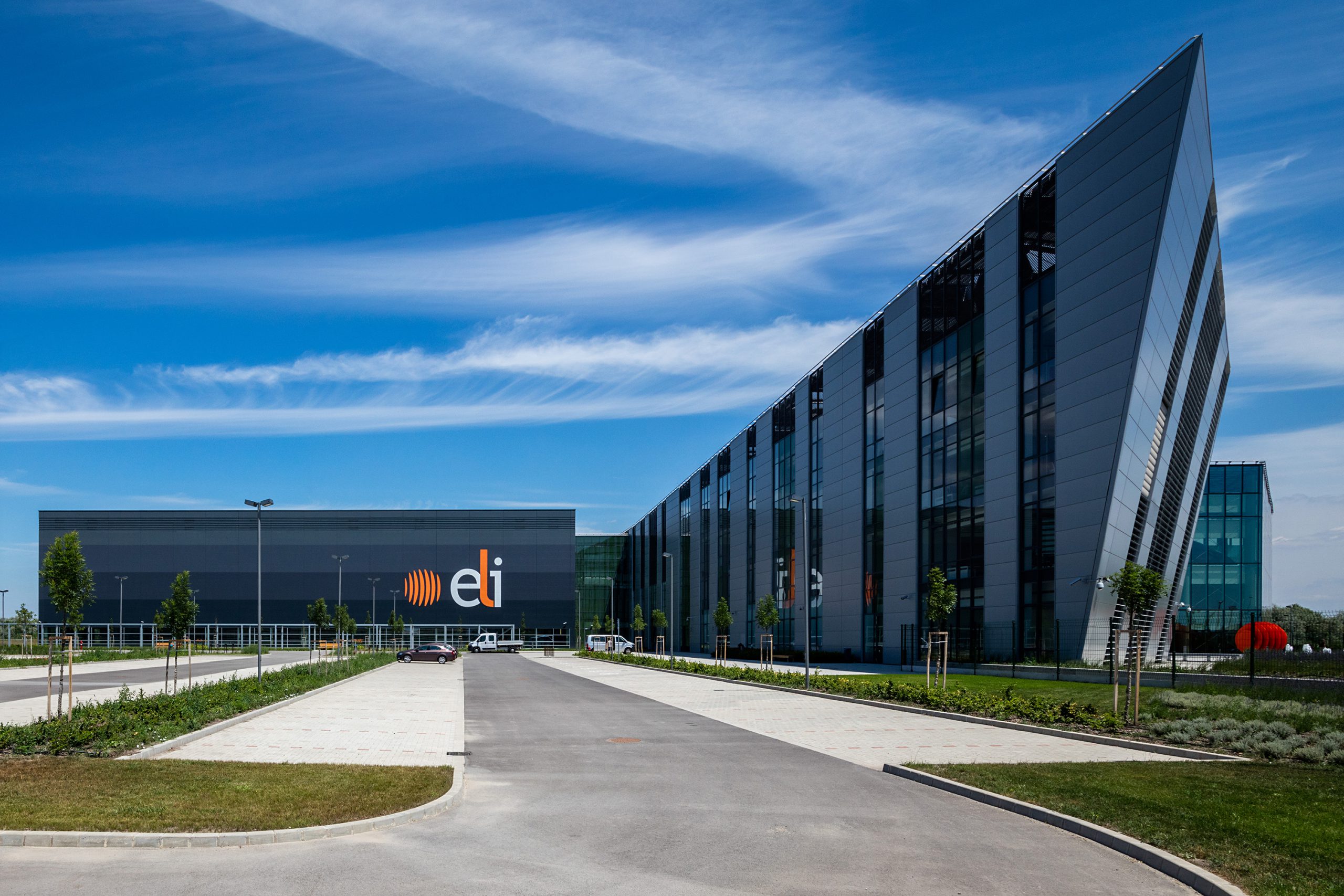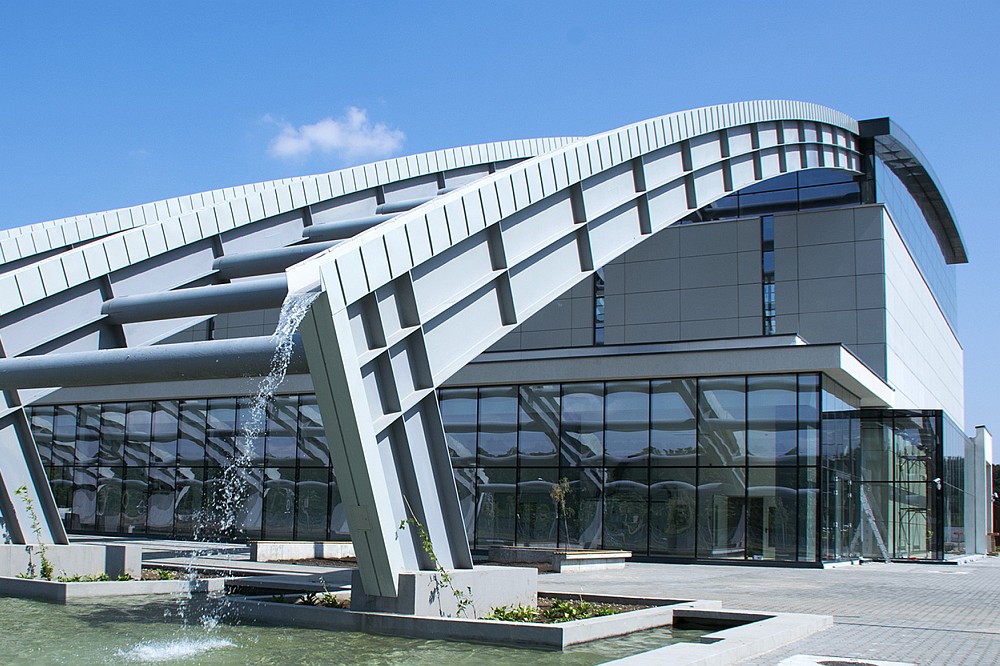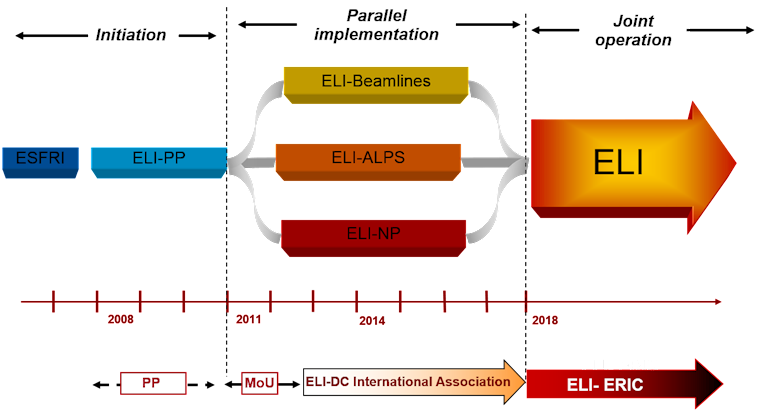THE EXTREME LIGHT INFRASTRUCTURE ERIC
Social Media
The Extreme Light Infrastructure ERIC (www.eli-laser.eu), is an international laser facility offering new interdisciplinary research opportunities using extreme light from the highest peak power laser sources, currently available, and dedicated to the purpose of research. These lasers and the secondary radiations derived from them will enable unprecedented discoveries across a broad range of scientific disciplines as well as societally relevant applications.
On 30 April 2021, the Extreme Light Infrastructure (ELI) was granted the legal status of European Research Infrastructure Consortium (ERIC) by the European Commission. ELI ERIC will provide access to world-class high power and ultra-fast lasers for science and enable cutting-edge research in physical, chemical, materials, and medical sciences, as well as breakthrough technological innovations.
The Czech Republic hosts the ELI ERIC statutory seat in Dolní Břežany, in the South of Prague, at the ELI Beamlines facility. A second facility, ELI-ALPS, is hosted by Hungary in Szeged. The Czech Republic and Hungary are joined by Italy and Lithuania as founding members, while Germany and Bulgaria are founding observers. A third ELI facility is under construction in Romania in the field of nuclear photonics and is expected to complement the current ELI ERIC facilities in the future.
Emerging from a coordinated effort of a multi-national scientific laser community, ELI is the first, multi-site ESFRI Landmark constructed in the Central Eastern European Member States with three complementary Facilities located in the Czech Republic (ELI Beamlines), Hungary (ELI-ALPS) and Romania (ELI-NP). ELI relies on an innovative funding model combining European Regional Development Fund (ERDF) and co-funding from the hosting countries for construction, and contributions to a European Research Infrastructure Consortium (ERIC) for operations.

© Copyright: Extreme Light Infrastructure ERIC
The ELI Beamlines
located in Dolní Břežany (near Prague), Czech Republic, focusses on the development of short-pulse secondary sources of radiation and particles, and on their multidisciplinary applications in molecular, biomedical and materials sciences, physics of dense plasmas, warm dense matter, and laboratory astrophysics. In addition, the facility will utilise its high-power, high-repetition-rate lasers for high-field physics experiments investigating exotic plasma physics, and non-linear Quantum Electrodynamic effects.

© Copyright: Extreme Light Infrastructure ERIC

© Copyright: Extreme Light Infrastructure ERIC
The ELI Attosecond Light Pulse Source (ELI-ALPS)
in Szeged, Hungary, provides light sources in the form of ultrashort pulses with high repetition rates between terahertz (1012 Hz) and X-ray (1018 - 1019 Hz) frequency range. ELI-ALPS will be dedicated to extremely fast dynamics by taking snapshots in the attosecond scale (a billionth of a billionth of a second) of the electron dynamics in atoms, molecules, plasmas and solids. It will also pursue research with ultrahigh intensity lasers.
The ELI Nuclear Physics (ELI-NP)
The ELI Nuclear Physics (ELI-NP) in Magurele, Romania, is focused on laser-based nuclear physics. It will host two machines, a very high intensity laser, where beams from two 10 PW lasers are coherently added to get intensities of the order of 1023 - 1024 W/cm2, and a very intense, brilliant gamma beam obtained by incoherent Compton back scattering of a laser light off a brilliant electron beam from a conventional linear accelerator. Applications include frontier fundamental physics, new nuclear physics, astrophysics, nuclear materials and radioactive waste management.

© Copyright: Extreme Light Infrastructure ERIC
IMPACT
ELI is expected to have a significant impact on science, society and economy on a local, regional, European but also on a global level. The ELI Facilities provide employment and business opportunities that will drive Europe’s competitiveness and open up unprecedented possibilities in particle physics, nuclear physics, high energy beam science, nonlinear field theory, and ultrahigh-pressure physics. Experiments at the ELI Facilities will spur discoveries and innovations in a range of fields that have a global reach and impact, from nuclear materials and radioactive waste management, industrial tomography and gamma radiography, pharmaceutical radioisotopes, medical imaging, radiation and proton cancer therapy, among many others still to be explored.
Timeline
The Preparatory Phase (PP) of the ELI project started in November 2008 and finished in December 2010. The Construction/Implementation Phase, during which the facilities were built in parallel in the Czech Republic, Hungary, and Romania, started in 2011 and was completed in 2018. During the Commissioning Phase, which ran from 2018 until the end of 2020, the initial systems were set up and the first user experiments were commissioned. Currently, ELI is in its Initial Operations Phase, which will run until the end of 2023. During this Phase, the focus is on consolidating the ERIC, integrating the operations, and organising joint user calls. The expectation is that ELI will enter Steady-State Operations in 2024.

ELI's Timeline © ELI Delivery Consortium


